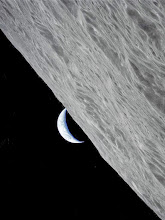Green Run Update: Data and Inspections Indicate Core Stage in Good Condition
SLS Hot Fire Shutdown Due To Conservative Testing Parameters, Not Engine Malfunction
The online magazine of science, technology, socioeconomics, politics, and the future
2021 is going to be a very exciting year for NASA and the US space industry. In 2021, we should see the debut of the second Commercial Crew launch system when the ULA (United Launch Alliance) deploys its first astronauts into orbit aboard the CST-100 on top of an Atlas-Centaur rocket. The ULA will also debut their Vulcan-Centaur rocket system in 2021. This year will also be the debut of Blue Origin’s New Glenn heavy lift vehicle which should be capable of deploying up to 45 tonnes to LEO. And, finally, the SLS will launch an unscrewed Orion spacecraft beyond LEO before the end of 2021, debuting a spacecraft that will initially be capable of deploying 70 to 95 tonnes to LEO.
But the Biden administration needs to neutralize any attempt by Trump and Trump extremist in the Republicans Party to use NASA as a political wedge issue against Democrats during the next two election cycles. Displaying strong support for NASA could help Democrats turn states like Florida, Ohio, and even Texas Blue again during the next presidential election. And it could increase the number of Democrats in the legislature during the next two election cycles.
There’s no logical reason for the Biden Administration to be stingy with NASA’s relatively meager budget. So Biden needs to be bold and raise the NASA budget up to $30 billion a year. This would allow ample funding for the ISS plus sufficient funding for the Artemis program. And it would also allow NASA to provide grants for funding the development of the next generation of carbon neutral aircraft from airships, to electric airplanes, to hypersonic transcontinental aircraft— and even spacecraft.
 |
| Jobs and economic output from NASA in 2019 |
A $30 billion a year NASA budget would still account for less than 1% of annual Federal spending (less than one penny for every tax payer dollar sent to Washington). Plus NASA spending creates more wealth than it consumes. 2019 estimates indicate that NASA’s $21.5 billion budget created $64.3 billion in economic output. So for every tax dollar invested in the National Aeronautics and Space Administration, NASA pumped approximately $3 back into the general economy. How many government programs can do that!
Biden needs to avoid calls for cooperating with China’s ruling oligarchy in space-- which would not result in any significant savings for US tax payers-- and could only lead to more outsourcing of strategically important US jobs in the space industry to an economic and strategic enemy.
Instead, the Biden administration should focus on establishing international rules, through the UN, on the regulation of lunar and martian territory. Such rules should allow governments and private companies to lease up to 1% of the total land area on the Moon and Mars under the administration of individual governments on Earth under the existing Outer Space Treaty while preserving at least 99% of the land area on the Moon and Mars. Once percent of lunar territory would comprise some 380,000 square kilometers on the surface of the Moon (that’s still an area larger than 46 states in the United States). One percent of martian territory would comprise 1.45 million square kilometers (an area larger than the states of Texas, California, Florida, and New York combined).
Cooperating with Republicans in Alabama, Texas, Florida, and Ohio, some conservative states that have significant economic output from NASA could help the Biden Administration to garner enough Republican support to pass critical legislation-- on other-- important issues such as energy, climate change, health care and US military power at home and abroad.
Links and References
NASA Economic impact report Y 2019

